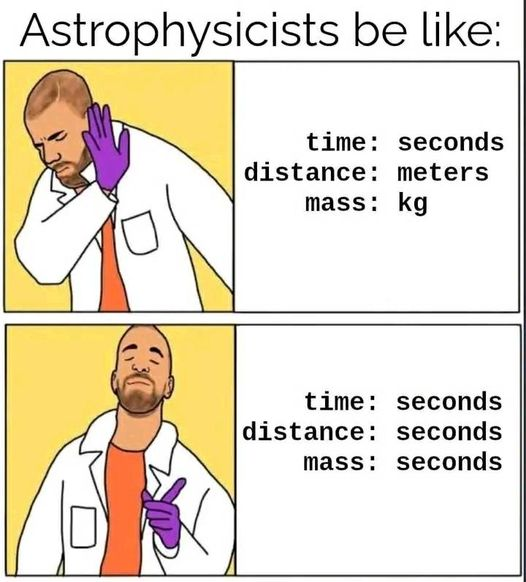this post was submitted on 02 Sep 2024
701 points (98.6% liked)
Science Memes
12092 readers
2839 users here now
Welcome to c/science_memes @ Mander.xyz!
A place for majestic STEMLORD peacocking, as well as memes about the realities of working in a lab.

Rules
- Don't throw mud. Behave like an intellectual and remember the human.
- Keep it rooted (on topic).
- No spam.
- Infographics welcome, get schooled.
This is a science community. We use the Dawkins definition of meme.
Research Committee
Other Mander Communities
Science and Research
Biology and Life Sciences
- [email protected]
- [email protected]
- [email protected]
- [email protected]
- [email protected]
- [email protected]
- [email protected]
- [email protected]
- [email protected]
- [email protected]
- [email protected]
- [email protected]
- [email protected]
- [email protected]
- [email protected]
- [email protected]
- [email protected]
- [email protected]
- [email protected]
- [email protected]
- [email protected]
- [email protected]
- [email protected]
- [email protected]
- !reptiles and [email protected]
Physical Sciences
- [email protected]
- [email protected]
- [email protected]
- [email protected]
- [email protected]
- [email protected]
- [email protected]
- [email protected]
- [email protected]
Humanities and Social Sciences
Practical and Applied Sciences
- !exercise-and [email protected]
- [email protected]
- !self [email protected]
- [email protected]
- [email protected]
- [email protected]
Memes
Miscellaneous
founded 2 years ago
MODERATORS
you are viewing a single comment's thread
view the rest of the comments
view the rest of the comments

Shouldn't m = F/a so n/s^2?
E=mc^2 so m is joule seconds^2 / meter ^ 2
F=ma so m is Newton seconds^2 / meter
A joule is 1 Newton / meter so they agree
A joule is 1 Newton / second, but those units do still agree
A J = Ns not N/s
One Joule of energy is one Newton of force applied for 1 second.
Muphry's law at work - for both of us, actually. I looked it up (since with Ns the units no longer worked out between E = mc² and F = ma), and a joule is actually a Nm, a Newton-meter. And with that the units do work out correctly on both equations.
That is really unintuative, torque is Nm...how can energy also be Nm.
But then I look at it and J = Ws = N(m/s)s = Nm
Because you can do kinematics two ways. You can look at it by speed*mass, or by energy - in both cases it quickly gets way more complicated when you move beyond spherical cows in a vacuum, but both are equally valid. There's trade-offs to each approach, but the answer should end up the same
Just like how you can say a rod from God or an asteroid impact is x kilotons of explosives, you're looking at the energy being scattered on impact. If you set your reference frame to Earth, you only have to look at the relative speed and mass of the other object and you get a reasonable estimate. You could also factor in how much the earth moves from the impact, factor in how much the atmosphere, water, and soil "soften the blow", you could theoretically look at how the movement of other celestial bodies gently tugs at both as they impact, the resistance of the materials moving through the earth's (and sun's) magnetic field, and endless other factors
Ultimately, models are extreme simplifications, as are measurements. The universe doesn't care about units or numbers, the universe works on ratios. Numbers aren't real - they're a mental shortcut. Something exists or it doesn't, there isn't two of anyone as far as reality is concerned. Our universe cannot be compressed beyond itself without losing information
You probably don't care about how much torque your car has on Io, but reality does. 10k tons of TNT is not remotely going to be the same as a nuclear explosion, but humans will only see a mushroom cloud and destruction over a similar area
But models are useful - they predict well enough to give us a starting point.
Lol wait is a joule actually one Newton meter? 😅
Now I'm so confused
You've got it - it is a Newton-meter